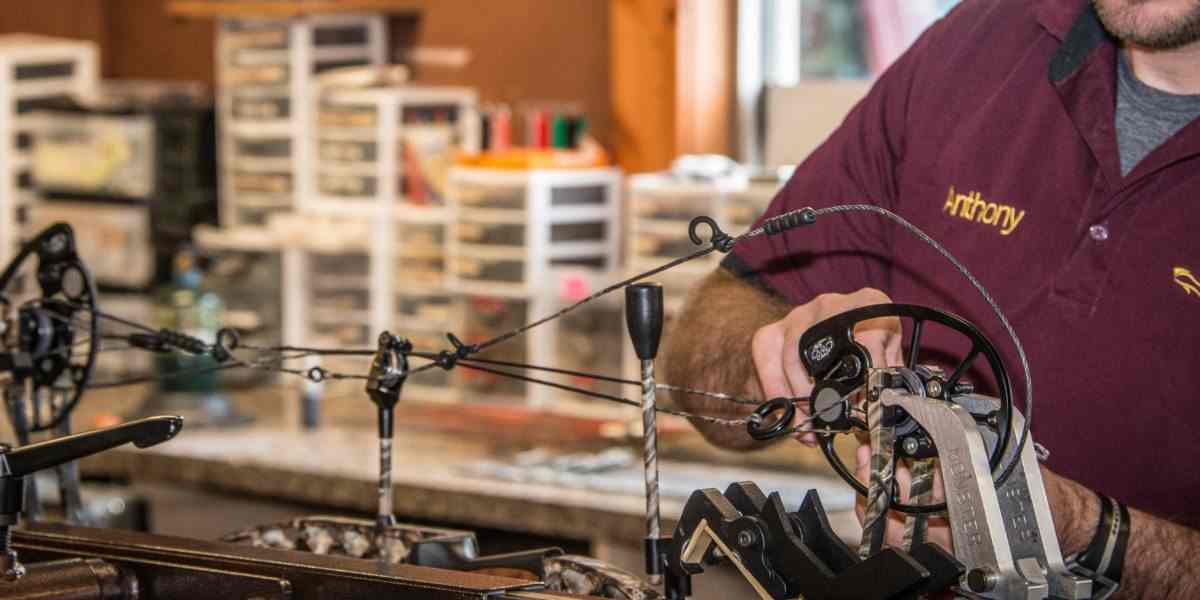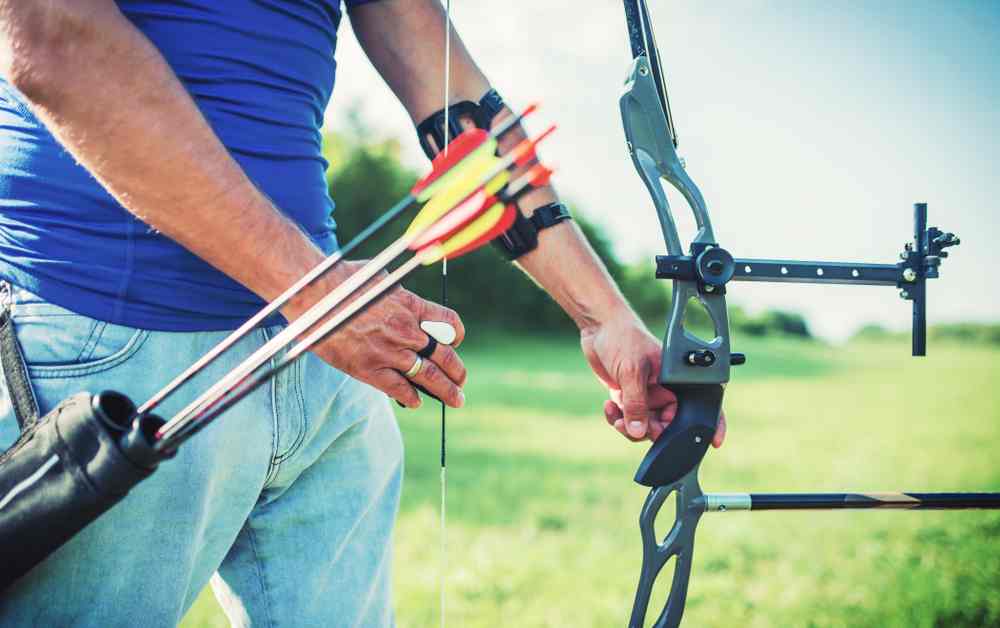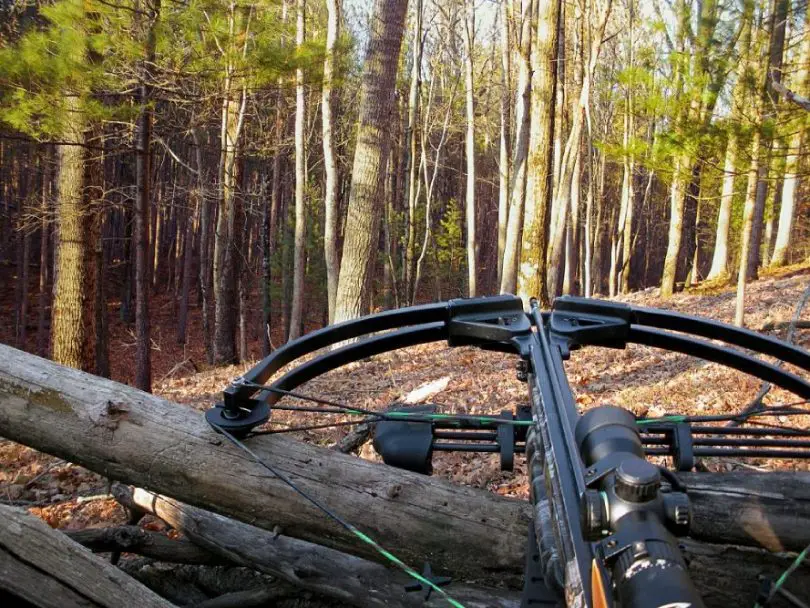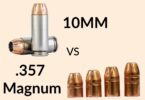If you own a compound bow, you know how important it is to keep it in good working condition. A well-maintained bow will perform better and last longer, whether you use it for hunting, target shooting, or other activities.
Regular compound bow care is also essential for ensuring that your bow is safe to use and won’t malfunction at unexpected times. In this blog, we’ll take a look at some of the key maintenance tasks that you should perform on your compound bow to keep it in top condition.
From string and cable care to limb and cam maintenance, we’ll cover all the basics you need to know to keep your bow in excellent shape. Whether you’re a seasoned bowhunter or a novice archer, this guide will help you take good care of your equipment and get the most out of your compound bow.
Pay attention as we explore the secrets of compound bow maintenance. Let’s get started!
Compound Bow Maintenance: Step-By-Step Tutorial

1. Examine Your Bow Regularly
It is essential to take out time and inspect the bow properly. Check for any signs of regular wear or damage. If you notice a strange vibration or sound during the process of inspecting or shooting, try to pinpoint and eliminate the issue.
Most time damages result from little irregularity. But with time, if it’s given less attention, it can escalate into something serious. And what you once thought was just a noise ends up becoming a fractured limb.
Remember the adage “A stitch in time saves nine.” This implies that a quick fix will solve the “big problem,” which will end up attracting more time, resources, and energy.
2. Check your Cables & Bow Strings
Run a check on the cable and bowstring regularly. And if you spot out any form of wear or damage, carry out the necessary replacement.
Usually, the replacement of cables and strings should be done within 12 -18 months of interval or after 2,500 shots. Doing this will help regulate the performance of the bow.
3. Wax the Strings When Needed
Wax your bowstring and cable regularly. If the bow is used routinely, this can be done in a weekly interval. But if the bow is used less frequently, the wax should be applied once or twice a month.
Avoid rubbing the wax too hard, and make sure the wax has a soft nature. Remember, excessive friction can generate heat and can damage the entire cable, or other parts of the bow.
4. Avoid Dry Firing
“Dry fire” should be avoided as much as possible, avoid shooting a compound bow that has no arrow placed in it. This can potentially break your bow and injure you or the people around you.
If you miss fire without an arrow or dry fire accidentally, check out potential damages on the bow, run a check on the limb and ensure it is crack and wear-free. If you want your bow to last longer,
don’t dry fire your bow under any circumstance.
5. Sync It Before Shooting
The cams of your compound bow have to be synchronized for the bow to fire appropriately. The location of your bow’s cams can also influence the draw length, draw weight, timing, and the bow’s ability to store energy.
If the cams you’re using are not in line, it is possible to struggle while aiming, or have your arrow fall before the expected point. This can also be a significant factor that leads to bowstring failure.
You should have your cams rotated to the let-off point, once the bow is fully drawn. If both cams are not in the same position, this is a clear sign you need to adjust one of the cables.
If you’re a beginner and lack the required skills to regulate the cable, then it’s essential you seek the attention of an expert. If you don’t want to replace your bowstring frequently, make sure your cams are synchronized.
6. Maintain the Draw Length
Don’t extend the string beyond its limits. Remember Hooke’s law? Your compound bowstring won’t be an exception either. Excessive stress on the cables will only lead to breaks before a stipulated time.
Examine the cable to spot cracks or dents. Spotting out small dents can be normal, but if the dent becomes deep or too many, then this can cause the cable to snap out within a couple of weeks or months.
7. Keep Away from Excessive Heat
Keep the bow away from extreme heat. Direct exposure to excessive heat will lead to a failed limb or a break in the cable or string material.
Excess exposure to heat can lead to unnecessary stretch on the cable and cause them to weaken. It can also lead to bending the wrap found on its surface. We recommend locking it up inside the bow case when not in use.
A place to store the bow is important since the equipment is used once in a while. It should be placed in a dry place with optimum temperature.
Avoid exposing the bow to elements and make sure the entire surface is adequately dried off before storing. Use silica gel on the surface of the bow, if you intend to keep moisture away. Silica gel absorbs moisture; this makes it a perfect choice to keep moisture off the bow’s surface.
8. Keep It Well Lubricated
Lubricate the axles; this is a sure way to help your cable run swiftly. This time around, you will have to use quality lube without using a cleaning agent. The lubricant used will ensure the cables and cams are moving smoothly. If this is in place, you can quickly draw back the string with less friction.
However, If you’re using a bow with cams made with needle bearings, don’t oil it. Oiling could lead to a breakdown on the packaged grease, and this can damage the bow.
9. Tuning Your Bow
One of the best ways to check a bow that functions appropriately is paper tuning, and running a check on the level by which arrows are flying true. Here is how to go about this.
- Place a piece of paper to the frame of the bow in a way you can fire through
- Stand eight feet from the paper
- Use a good form and shoot your bow across the paper
- Observe the outcome
- Adjust the bow if necessary and carry out the process again
Using this procedure will allow you to observe the tear or hole on the paper that was created by the arrow. The degree of the tear will give you the information needed on how to go further with the adjustments on the bow.
Let’s take, for instance, if you observed the tear too long downwards or upwards, you would need to carry out some adjustment on the bow’s nocking point. If the crack is long to the left or right direction, then it’s possible you have a problem with the timing.
Once you’re done tuning, you will have a straight, clean hole on the surface of the paper, signifying a well-tuned bow. If you’re unsure, you can ask for help from professionals in your area. Hit your local range and tune your bow for the upcoming hunting season.
10. Get an Annual Inspection Done by a Pro
Last but not least, you should opi in for professional compound bow maintenance every once in a while. It doesn’t matter if it’s a bow for a woman or a man, your bow needs to get regularly inspected.
Compound bows are perfect examples of a mechanical device. It has a number of different parts; as a result, maintenance can most of the time be complicated, especially if you are new to this.
Following bow maintenance tips and using the bow carefully can help protect your bow for longer. However, it is still important that you carry out periodic inspection and proper care, from a professional.
Seek the attention of an expert for appropriate inspection and maintenance, at least once in a year. Professionals are known to have years of experience; they can help you spot potential problems and get them fixed before it leads to something bigger.
Pro Tips on Compound Bow Maintenance

Below are two tips to have in mind when carrying out maintenance on your bow.
Ensure single use: As humans, we have different levels of energy; this also applies to the way we handle a bow. When you shoot your compound bow often, the string becomes confirmed to a specific level of stress it undergoes by the level of energy exerted on it. On the other hand, if the bow is shared with someone else, it can lead to damage due to a change in the level of force used on the string.
Bows are outgrown: it is important to review your child’s archery equipment to make sure it fits them correctly; this is yet another means to maintain and ensure safety while using a bow.
All that is required is a couple of minutes to run a check and carry out proper maintenance and ensure your bow is functioning at its peak at the time it’s needed. Although maintenance will depend on how often the bow is used. Always remember, time investing in maintenance is never wasted since it will save you the stress of “Stitching Nine.”
FAQs
1. How Much Does It Cost to Restring a Compound Bow?
Ans. On average, it cost $20, although the process might be a bit expensive if you had to visit someone with more experience. And don’t forget, better qualities come at a better price. In the end, you might pay above $120 -$150 for a professional restring.
2. How to Tell if Your Bowstring is Bad?
Ans. Check out fiber separations, dry conditions, or fuzzy texture by running your fingers upward and downward. If you observe the bow appearing a bit fuzzy or dry, use bowstring wax on the spot until it is properly absorbed over the surface. Afterward, re-inspect for damage or wear signs. If you know how your compound bow works, this will be easy for you to identify any issues.
3. How Much Does It Cost to Restring a Crossbow?
Ans. On average, the cost of restringing a crossbow can range anywhere from $50 to $150, although some high-end models or custom-made strings may cost more. Additionally, some shops may charge extra for any necessary repairs or adjustments to the bow, such as replacing worn or damaged cables or strings.
4. How to Clean a Compound Bow?
Ans. Cleaning is an important part of taking care of your compound bow. Here’s the process in a nutshell:
- Remove the arrows from the quiver and set them aside. Unstring the bow.
- Use a soft cloth or brush to remove any dirt or debris from the bow limbs, riser, cams, and other components.
- Check the bowstring and cables for signs of wear, such as fraying or damage, and replace them if necessary.
- Apply a small amount of bowstring wax to the bowstring and cables, using a clean cloth or applicator. Be sure to avoid getting wax on the other components of the bow.
- Apply a light coat of bow oil or silicone spray to the bow’s metal components, such as the cam, idler wheel, and limb bolts, to prevent rust and corrosion. Wipe off any excess oil with a clean cloth.
- Check the bow’s accessories, such as the sight, rest, and stabilizer, and clean them as needed using a soft cloth or brush.
5. Can a Compound Bow Survive a Dry Fire?
Ans. No. Most dry fires have the potential to damage your compound bow. As compound bows usually have more moving parts, dry firing can do a lot of damage. The higher your draw weight will be, the greater potential dry firing will have to damage your bow.









Leave a Comment